#many mystical/esoteric ideas
Text
30% of Trump supporters are crazy and otherwise have incomprehensible politics, the remaining 70% are both stupid and evil
#I’m just fascinated by conspiratorial ppl who have some left wing ideas#some areas of political realism#many mystical/esoteric ideas#and then. they love Trump#some kind of brain virus I think
3 notes
·
View notes
Note
hi red!! i'm doing an analysis of sun wukong's (and journey to the west in general's) impact on modern culture for my world mythology final, and for some reason i'm having a hard time finding sources. is there anything you can recommend?
The fact that Journey to the West has contributed an enormous number of tropes to modern media is very clear when the media in question is examined, but I don't know of a specific secondary source that's already done that analysis for you. However, this IS a very good excuse for you to plow through a metric buttload of shonen manga, since the lineage is basically Sun Wukong -> Son Goku -> like a solid third of all shonen action heroes written in the last forty years.
Dragon Ball kicks things off:

Started in 1984 and almost unquestionably the most influential manga ever made. Its first arc features the weird super-strong monkey-kid Son Goku - which is just the japanese pronunciation of the characters of Sun Wukong's name - meeting up with a wacky crew of thinly-veiled expys of the Journey to the West crew, with teen inventor Bulma filling the role of Tripitaka, Oolong the pig-man filling Zhu Bajie's role and Yamcha the desert-based bandit as Sha Wujing.

Hijinks ensue, and while the story drifts pretty far from Journey to the West's original plot, it actually stays pretty solidly referential in weirdly unexpected ways. Several the villains of the week are JttW references, and even the later appearance of three more Saiyans lines up with the surprise reveal of three more Wukong-like mystical apes in the original story.

The connection between Dragon Ball and JttW is very unsubtle and a frequent reference in the chapter covers and supplemental art.
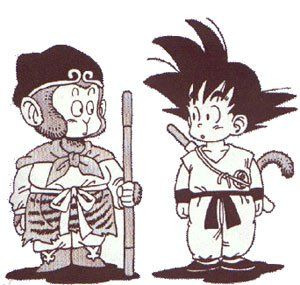

Not every subsequent JttW reference is the result of Dragon Ball popularizing it or anything, since it was already enormously popular, but I think it's pretty hard to extricate Dragon Ball's influence on anime and manga from the original influence of Journey to the West itself.
One way that a distinction can be drawn is in the differences in characterization between Goku and Sun Wukong himself. A lot of the next generation of shonen protagonists were kind of Goku-alikes - pure-hearted dumbasses who only care for the three Fs: Food, Fighting and Friendship.


But the original characterization of Sun Wukong is not really all that similar. He's a trickster, sure, but he's far from a young, friendship-motivated goober. He's profoundly intelligent, pretty much the most well-educated entity on the planet, and routinely brings up that he's centuries older than most of his peers. The Goku-alikes from the later decades of shonen anime are tellingly far-removed from that original characterization. So you get characters based on Goku's cheerful idiocy, but it's just a small subset of the broader influence of Journey to the West on the space of literature.
In general, Journey to the West frequently shows up in very small, bite-sized tropes in other stories. It's less "this is wholly based on Journey to the West" and more "oh, I know where they maybe got this idea/aesthetic/power/weapon/villain of the week from." There are way too many to list, but some of the ones that tend to jump out at me are-
Sneaky characters with monkey motifs:
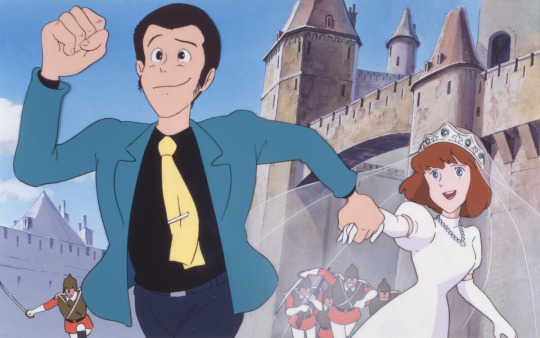
Tricksy, highly mobile characters who fight with a staff:


Characters afflicted with a magical restraint artifact that allows a much weaker character to stop them from misbehaving:

Specific esoteric weapons, eg. magical fans, rakes, gourds, namedropping The Sword of Seven Stars, etc.

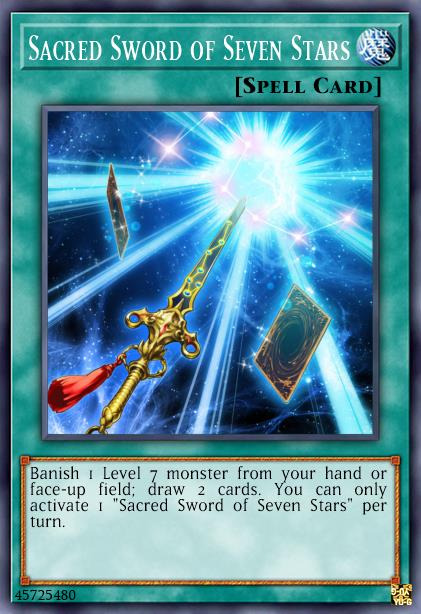

Villains with prominent ox or pig design motifs:


Characters whose primary combat strat is just making Shitloads Of Disposable Copies Of Themselves:


Honestly it just keeps going like this. It's kinda everywhere. Finding the JttW in things is my favorite conspiracy theory rabbit hole because it's 100% harmless and more often than not completely correct.
638 notes
·
View notes
Note
How do cards gain meaning in an occult sense? Like, both tarot and french-suited playing cards started as game pieces, but they have gained an understood meaning. Is it just someone whips up an organized table of connected ideas or is each card interpreted from a certain framework?
Oh good question!
Many things that we now consider staples of western magic are ideas that have been added to over generations by several layers of thinkers. Tarot Divination specifically is an excellent example of this!
In 1770, A french printmaker and occultist going by Etteilla published a book about how to do cartomancy with a 32-card Piquet deck. He writes down some simple but strict associations for the cards, and makes what is probably the first mention of reversals in carotmancy. He said that he learned the system "from an Italian." Now, its unclear how much of the system is his own invention, people have been doing cartomancy for as long as there's been cards, but the text presents a larval, bare-bones version of the cartomancy methods we know and love today.
Its 1780-ish. The Rosetta stone hasn't been discovered yet. Occult-inclined Europeans are obsessed with Egypt. That's where our boy Trismegistus is from! There's a concept in Egyptian mythology called The Book of Thoth, a mythical book of spells penned by the God of Knowledge himself. This was the Holy Grail for European Occult Egpytaboos.
In 1781, Antoine Court de Gébelin claimed that Tarot cards were the "original book of Thoth," Saying that Tarot cards had been used by ancient Egyptian priests for their own magical ceremonies, and that their designs contained ancient mystical secrets. This is 100% not true, but he writes a pretty fun pseudohistory for Tarot that involves Romani people bringing the decks to Europe through the Levant where they then taught its esoteric secrets to several Popes.
Then in 1783, Ettellia responded with another book. Manière de se récréer avec le jeu de cartes nommées tarots ("Way to recreate yourself with the deck of cards called tarots") Where Ettellia basically claims "uhm actually I knew about tarot divination way before Court de Gebelin published that big ass book. But anyway here's an interpretation of Tarot symbology that includes multiple references to Egyptian, Zoroastrian, and Greek mythology." But the smartest thing he did was include spread methods that involved Thoth and Numerology. Napoleonic Occultists fucking loved Thoth and numerology.
In 1788, he formed a little magical society for the express purpose of discussing and workshopping ideas for Tarot divination. In 1789, he made a TRULY smart decision, and published a Tarot deck that was Specifically For Magic, and that basically cemented Tarots place in magical history.
Occultists just kept iterating! Someone would speculate "maybe the suits correspond to the elements" and people went "yeah, they correspond to the elements! That makes this tool even more fun and interesting to use!" Then people go "What if the suits and the elements also correspond to parts of the Self?" and people went "Sure they do! That makes this tool even more interesting!"
But its also not just one thread. Eventually you get the Golden Dawn saying "The Major Arcana correspond to the nodes and paths on our version of the Quabbalistic Sefirot, you know, the hermetic version with a Q." and some occultists responded "Idk about that! Love what you've done with the color symbology though!"
The development of magical ideas is an iterative process. It is people whipping up a table of correspondences, but that table needs a mythology to keep it together. Originally, the mythology that gave tarot "power" was its Egyptian pseudohistory, but these days its the fact that occultists have been iterating on and fine-tuning this system for hundreds of years.
Humans don't think in tables of information, they think in stories. The cool thing about stories is that they're flexible. If magic is anything, its learning how to engineer stories to make the tables of information more effective.
I'm gonna plug my patreon where I post all of my occult research if you wanna see more stuff like this
#Tarot#Occult#I was supposed to edit today but I couldn't pass up this opportunity for a micro essay#cartomancy
3K notes
·
View notes
Note
Sorry to bother you, can I ask what the square on the antisemitism bingo card that says “Biblically accurate angels” means? I mean, I know what the internet has decided angels look like, but I’m not familiar with why that’s wrong. Maybe this is a stupid question, sorry.
Okay, so basically, fandoms especially love talking about "Biblically Accurate Angels" and compare angels to Eldrich Horrors and the like when they draw them with thousands of eyes, or wings, etc etc. But the thing is....these depictions come from the Tanakh. There are specific "looks" for specific angels described in the Tanakh, and then later in esoteric and mystic writings such as the Kabbalah.
But Tumblr and meanstream sites and media took this and essentially turned these very holy and very specific appearences and made fun of them and made them into essentially Christian cryptids.
But Christianity has nothing to do with how Seraphim, or Cherubim, or Chayot, or any class of angels look. The Tanakh came first, and any Christian idea of angels is a bastardization of Jewish ideas combined with Roman and Norse pagan mythologies. So when you talk about Christian angels and then mix in Jewish texts into them, you're misappropriating and making fun of our culture and beliefs.
Angels having many eyes, or many heads, or animal heads, or many wings, etc etc has nothing to do with Chrisitianity. Christian depictions of angels are very humanoid and whitewashed. Jewish angels are not your Christian cryptids.
The Tanakh is not the Bible. The Bible is a misappropriation of the Tanakh, an intentional mistranslation of our sacred texts to make them all about Jesus.
Making fun of Jewish mythologies and beliefs isn't cool, and fandom-izing our sacred texts is antisemitic.
2K notes
·
View notes
Text
I don't know if I just haven't encountered it yet, but I haven't really seen anyone talking about or acknowledging something that's neither Unverified Personal Gnosis or Shared Personal Gnosis, but rather a third thing: Personal Group Gnosis.
PGG emerges from a small group of people having similar experiences to each other, which may or may not resemble anything that people outside of the group are experiencing.
This isn't inherently a bad thing. But among those who lack critical thinking skills, it can lead to some real trouble if they conclude that their similar experiences means that they're uncovering an actual objective truth, regardless of whether it's congruent with anything anyone outside of the group is experiencing.
One thing that many people fail to account for is the fact that they and their group generally share many of the same preconceptions and biases. For example, a group of younger Wiccans are very likely to believe in now-debunked ideas such as the great goddess hypothesis and the witch cult hypothesis. They'll believe in the existence of pagan gods, but they'll probably have a Christian-influenced understanding of divinity and morality, with little to no comprehension of the role that animism played in the development of pre-Christian traditions, nor with any real appreciation for how different values influenced the stories that people told about gods and other spirits.
They might even be exposed to similar media, which gives them all similar ideas about gods, spirits, and history. Even if they don't directly engage with the most popular media, it can still reach them through second or third hand exposure.
They're also likely reading the same spiritual, occult, and esoteric writers; or at least, reading people who have very similar ideas to one another.
And finally, since they're most likely friends and therefore trust each other, they are naturally biased toward accepting each other's experiences as valid, and working them into their own mental maps of the spiritual or metaphysical world.
In short, they're all primed to have very similar experiences to each other.
Without awareness that exposure to similar ideas can influence similar mystical experiences, it's very easy for a small group like this to generate a sort of shared map of reality that they feel justified in regarding as absolutely, objectively true.
It's at this point that people begin to feel confident telling you that if you just talked to your gods about what they're claiming, your gods would absolutely confirm them to be true. And if they don't, you were never really talking to those gods.
Having one's entire internal map of reality dictated by Personal Group Gnosis can be incredibly dangerous. It alienates you from the rest of the world by making you feel as if the only people you can trust are those who agree with your PGG. It can make you see outsiders as spiritually inferior, especially if they disagree with you outright. It can even encourage conspiracy thinking, because attributing what outsiders believe (or apparently believe) to the actions of a malicious conspiracy is a very common rationalization.
In other words, this is how you get a cult.
Now, a lot of people won't recognize it as a cult (and some will vehemently deny it's a cult) because it might not have a clear leader (though there's almost certainly a small number of people who have the most influence), and it probably doesn't have a financial goal. However, the destructive capacities of small groups of people living in their own reality cannot be denied. Members who don't go along with the group's accepted model of reality are often treated harshly, and are frequently targets for harassment. They may say that if you don't like it you can just leave, but let's be real, that's no simple matter if you believe that these are the only people with a real grip on reality, or if these people are basically your only friends, or even just your only friends who share your spiritual beliefs.
(If you're in this kind of situation? My advice is to start making more friends outside of this group. You don't have to cut yourself off from this group cold turkey; you can just start hanging out with other people more.)
Now, I'd like to emphasize that none of this is to say that PGG is inherently bad; I am only pointing out that it can be incredibly dangerous for people who lack knowledge, perspective, and critical thinking skills. Additionally, a group where there's a lot of this going on can be very dangerous for those who desperately just want to belong and get along, and push themselves to adopt their groups popular beliefs for fear of consequences.
Just like a single person's UPG doesn't dictate reality for everyone, neither does a single group's gnosis. PGG isn't inherently any better or more "correct" than UPG.
#gnosis#personal gnosis#upg#unverified personal gnosis#pgg#personal group gnosis#witchcraft#spiriuality#deity work#occult#occultism#esoteric#esotericism#magic#conspiracism#conspirituality
213 notes
·
View notes
Text
Stigmatization of the "Witch" and the Atrophy of Magickal Abilities
Folks seemed to like my post about demystifying the term “energy” in the witchcraft sphere, and that’s really cool because I think this topic is both interesting and important. Since I’m very much in the broom closet, it means a lot that we have an online space to celebrate each other’s esoteric ideas.
I’ve been thinking more deeply about the stereotypes surrounding witch culture. I wonder how many people out there are, for all intents and purposes, living the witch lifestyle but calling it by a different name. There is so much overlap between witchcraft and many different belief systems (Eastern especially), which is why witchcraft can be practiced regardless of one’s religion or lack thereof. But this stigma of the witch as problematic, kooky, evil, or otherwise unwholesome must leave people (including the witches by another name) with so many feelings or beliefs that go unvalidated.
Perhaps a middle-aged biology professor rejects the existence of gods but feels spiritual about morning dew on leaves, or freshly fallen snow. He doesn’t give himself permission to consider adopting a spiritual practice of any kind because in his social circles, any ritualistic praxis is equated either with theism or pseudoscientific mysticism. A church-going mother of three is drawn to divination or aligning her life with the phases of the moon but is ashamed because she’s been told her whole life that occult or pagan practices are wrong. A young adult recovering from the psychological damage of a strict religious upbringing closes herself to any ritualistic practice because society has conditioned her to equate ritualism and spirituality with deity worship or mystical nonsense.
It's no wonder so many of us feel lost! I want to give all these hypothetical people a big hug and tell them that what they’ve been told is just flat wrong. In the book The Power of Ritual, Casper ter Kuile remarks that ritual practices have become too tied up with bits of religious culture—that “institutions have turned mysteries into dogmas” and “the interlocking systems of oppression depend on our feeling alone and ashamed.”
I think that this is the very reason why humans have grown estranged from their own psychic and magickal capacities; like a muscle, these abilities atrophy when they go unused. Consequently, we lack even the ability to conceptualize and describe many valid facets of our own existence. I hope that someday, as a result of my own path, I can help people to strengthen these muscles and connect more deeply with the world.
#paganism#witchcraft#witch#just witchy things#pagan#neopaganism#secular witchcraft#witches of tumblr#ritual#occultism#occult#sass witchcraft#chaos magick#magick#witchblr#witch community#as above so below#witchy#spilled ink#spilled thoughts#spilled words#women writers#writers of tumblr#litblr
65 notes
·
View notes
Text
Gender in the Age to Come
A reply to a tumblr mutual in light of James B. Jordan's "Restoring the Office of Woman in the Church"
In order to respond here, my discourse in this post will necessarily take the form of somewhat esoteric musings. I apologize for this to everyone else. It is not my intention to be esoteric, but I am responding to a set of very niche and almost mystical claims.
As well, I do not intend this post to be a speculation about the exact nature of the resurrection bodies, since I do believe that is beyond the scope of what is revealed to us in the Bible. Sorry if that disappoints anyone.
Essentially what I set out to disprove here is the notion that manhood or masculinity is inherently corrupt, violent, a result of the fall, doomed to destruction, or even transient and temporal in a manner that stands opposed to the allegedly superior eternality of feminine qualities.
(Although this may not be your intention, it's hard to imagine how this wouldn't devolve into straight up female superiority brand sexism. But I digress.)
We thankfully agree that James B. Jordan is wrong when he says that the verse stating "woman is the glory of man" means that woman is a type of improved man. That's because of the context of that verse which also says, "Man is the glory of God" (yet as you astutely pointed out, man is not an improved God.)
So, what DOES it mean that woman is the glory of man? I think Jordan hits way closer to this later on in his essay series when he points out that glory is a type of situational relationship evoking the idea of emanation or generation. (obviously that's not ALL it is but I will get into this.)
It's clear to me that Jordan is a man of great wisdom and insight, however he does make some mistakes and he also clearly comes from a very high-church denominational background which colors some of his views.
As much progress as Jordan makes toward explaining some of the more esoteric verses on gender in the Bible, he does still neglect to explore some of the most interesting verses on gender, and does not explore how they might interact with the framework he has set up.
That is what I aim to do here. Although I have a number of quibbles with Jordan, mainly I want to take his best ideas and run with them to their logical conclusion.
My proposition is essentially that masculinity is about the imitation of Christ.
Is man's masculinity not the image of God? If this were not so masculinity would be a result of the fall, but it is not.
Will man not continue to be God's image for the rest of eternity? Or will he relinquish a part of this image?
Is God's image not a gift? Does God take back his gifts? Surely not, because, "the gifts and calling of God cannot be revoked". (Romans 11:26) [We are speaking here of spiritual giftings rather than material ones of course.]
Let's go through this point by point.
Consider the role of masculinity prior to the fall. Of course many things about Adam can be said to represent humanity in general rather than males in particular, but there is one very obviously gendered thing Adam did prior to the fall.
(Yes, Jordan is correct in that the Bible is implicit that Adam conveyed God's commands to Eve, but I am talking about something that's actually spelled out in the text.)
Adam had a role in the creation of Eve.
Hardly anyone these days wants to juice any meaning out of this part of the text for fear it will make women look inferior, but it is juicy. And when male inferiority is on the table, it is worth looking into.
Paul says in 1 Corinthians 11:11-12,
Nevertheless, in the Lord woman is not independent of man, nor is man independent of woman. For as woman came from man, so also man is born of woman. But everything comes from God.
And from there straight into the verses that Jordan covered.
It is interesting that Paul mentions man's labor in creating woman on an equal footing, which seems odd on the surface when you think that Adam's role in the creation of Eve was completely passive and not comparable to the labor that thousands of women do daily to
create new men, but Paul seems to think it is both noteworthy and comparable that woman was created out of man, and it's worth asking why.
If you like esoteric analogies, consider that Adam was put to sleep or "died" metaphorically speaking, sacrificing himself to create Eve. But after that time he again rose, with new "glory", that is, the woman.
So Adam underwent a symbolic sacrificial death that Eve might be created.
Woman did not do this. Only a male did this. Therefore this scene is a viable candidate for a defining masculine trait.
Sure, this is a pre-fall world. So Adam feels no pain, and the thing which he must sacrifice is not something that he will ever miss. But the symbolism is undeniable.
While imitating Christ, man not only dies, but also is resurrected and glorified.
As was our Lord, the ultimate Man. In whose image you are made.
For Adam that was not literal death, and glory meant getting the rewards of experiencing marriage. Therefore, if a man is 'made for death', he is made for resurrection and glorification as well, is he not? And isn't that too a part of his masculine nature as much as the sacrificial symbolic death which preceded it?
Now, I posit the imitation of Christ is a goal of an eternal nature and not merely temporal. In eternity when men are resurrected in glory will their masculine aspects not be more completely fulfilled by having this happen to them?
Clearly the purpose of men isn't to destroy life but to protect it. And ultimately even create it.
I would argue that even a man's capacity for violence isn't the defining characteristic of masculinity but an auxiliary characteristic that springs out of this central defining characteristic.
One might argue, "How can the believer's eventual death, resurrection and glorification be a male fulfillment if all women also die?"
A couple counter arguments:
You might as well argue that Jordan's theory of feminine "responsiveness" is not uniquely feminine since all believers submit to Christ.
All people have in them some germ of both masculine and feminine traits.
Essentially, if as you believe "death is masculine", then so is resurrection and glorification - you can not have the 1st be true without the 2nd also being true.
In the age to come, I posit that redeemed humanity will inherit both the masculine and feminine gifts, but the blessings we've already been given are by no means revoked. Women, having experienced death, resurrection and glorification with Christ; and men, having experienced spiritual marriage and unity to Christ, will both have achieved both masculine and feminine aspects.
Therefore, in the next age, everyone will find a way to share in both masculine and feminine. It is unclear to me whether we will all be therefore genderless from that point on or if some people will still be more masculine than feminine much in the way we are on earth where in our personality people have both masculine and feminine attributes.
After all, may I remind you that "The Bride" is not the ONLY metaphor used to describe the Church in eternity, we are also said to be "kings" who will "rule together with Christ" and "share in his likeness".
Remember that we relate to Christ not only as receivers of him but also as imitators of him.
Or do women not also have a calling to imitate Christ's sacrificial nature? Can women not protect at times? Just as men submit to Christ's headship.
(For one example not mentioned in the articles, Esther was a Christ-figure when she risked death to protect her people.)
On earth the "exceptional cases" of non conformity to gender roles in the Bible exist seemingly to prove that women are also ultimately inheritors of the masculine aspects of the divine nature just as men are of the feminine.
Genuinely I truly hope this helps. I have some other comments on Jordan's work as well, for example his part 3 seems to imply that pastors are intrinsically more masculine than other men, which I thought was very strange.
But there are things about his insights that I liked very much. For example, would you believe me if I told you this was the first take on gender roles that I've ever read which defines femininity as anything remotely approaching analytical or rational? Having long considered myself "masculine in temperament" I find this perspective both refreshing and validating.
Anyway, hope this helps. I am powerless to prevent you from somehow twisting this in a blackpilled manner, but I don't think it should be.
#christianity#gender#this has been a Post#the more i think about this the more certain i am#if men did not partly share in the feminine aspects of the divine nature#and women did not partly share in the masculine aspects of the divine nature#Jesus - being male - would have been unable to die for the sins of women.#right??#to anyone who is actually reading this basically i could be wrong about some or most of this#i realize this is basically a string of hypotheticals#based on the article#i am only mostly sure that peoples spirits even have gender
21 notes
·
View notes
Text
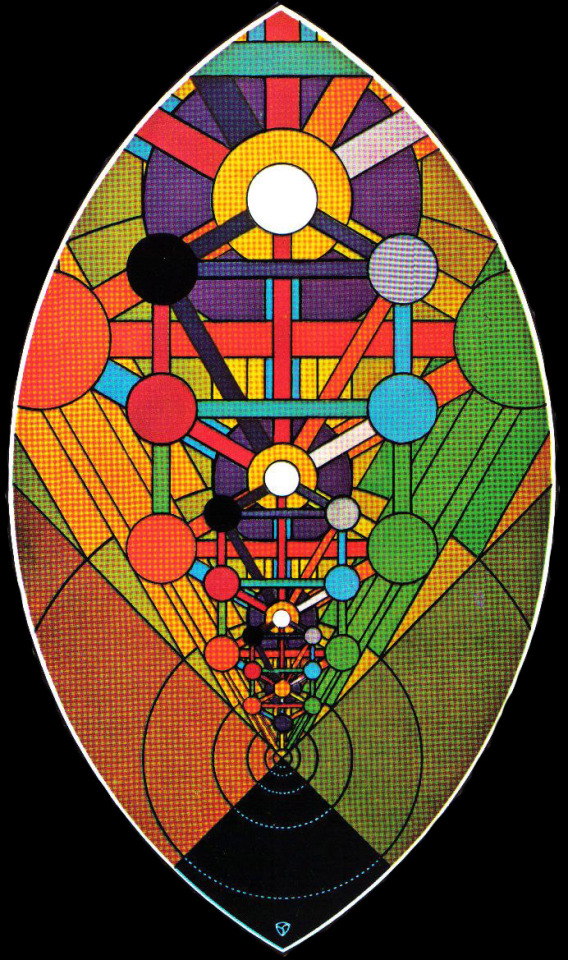
A Color Diagram
(From book, "The Anatomy of the Body of God")
The Geometry of the Tree
The drawing itself is a meditation, as anyone who has experimented with the quasi-spiritual exercise of exploring the results of drawing with a compass and a straight edge. These are the tools of Euclid and Pythagoras, the early Greek mathematicians, and also probably were used much earlier by the unnamed architects who built the pyramids and other structures. The game here is to intuitively contemplate the analogies–remembering that what's at stake is also the frontier of in here and out there, of mind and so-called objective reality.
It begins with a contemplation of the empty page. Yet there is the contemplator, who is also the potential artist. There is the idea of doing something–perhaps not even clear what–just something, of drawing. There is the idea of making a mark, of having a mark-maker, a pencil or its equivalent, a finger on sand. Not in the air–part of this paper-and-pencil idea has to do with a mark that will stay still, that will sit there, an extension of mind, an expression of will, a putting out there so that it sticks what is only glimmeringly becoming in the mind. So a toddler may experience the miracle of a crayon and paper–or before that, what? His own poop and a wall?
What if, as the esoteric students of many millennia suggested, what we do is in the "image of God," not just humans, but actions, and all the world. What exists in the divine milieu, the essential underlying principles, is manifested in what we call reality–even if that manifestation is only partial, only a tiny shadow of the greatness that expresses us. Thus, artists are known to express their frustration that their best efforts are only incomplete gestures, mere efforts at capturing the magnificence, the numinosity, of their mystical experience.
What if, speaking poetically, God wanted to express in a relatively static, dense context, in a form that wouldn't dissolve, like dreams, like water, a creative inspiration. She might begin by making a figurative mark on a figurative piece of paper. The paper is space-time, the mark is–well, we call it the "big bang." But at first it was just a mark, a gesture of God.
By the way, this initial point is the beginning of drawing the tree of life diagram. It is the first sphere, a radiating sphere–like a very dense ink on a very absorbent paper–starting infinitely small, but being Divine, almost infinitely energetic, and spreading over a billion or more years.
Becoming, yet going nowhere. That calls for a second geometric event: the extension of a point as a line. In geometry, this moves from zero dimensions to one dimension. A line–but a line can be of any length, it can be infinitely long. There is no defined space yet. There's a sort of direction, but no form. It's perhaps poetically related to the light in the darkness described in the first chapter of Genesis in the Bible, or that wonderfully ambiguous word, "firmament." The kabbalists really contemplated this creation story, seeking the deepest meanings, including the ingenious idea that we are constantly, every moment, creating and being re-created as part of this divine process. It didn't just happen then. Like here and there, then and now may be equally an expression of our deepest habits of thought.
We don't even begin to have a diagram yet, we're just setting the stage for a process of diagraming, but pausing to contemplate how necessary it is to set this stage, to have a pen, a piece of paper, one who makes the mark, who moves, who stays involved in the creative process, proceeding from one step to the next. Each of these elements may have metaphysical meanings, equivalents.
(What have I been smoking? Naw. You see, when you really think about it, you don't need to alter your state of consciousness; the science-fiction / poetry activity is a stretching agent enough.)
Okay, so you point, line, and at some point, you say–wait, something else is needed. At least let's pick another point so that the line has a limit. A limit? Well, if you want to draw anything, you've got to have a limit. Two points. A beginning and an end. Oooh. Okay, let's stop this line...here. Wow, in all the time we've been talking, you've made the line really, really long. Depending on divine perspective and your belief in the limitations of the speed of light, let's just say that this line is... well, what? Several billions of miles long? Whatever, it won't fit on the paper. So let's have just you make it, not God, and let it be, say, four or five inches. We can work with that. Two parts of a line–pen, straight edge. Now what. Well, pick up the compass. A new tool–really, it could even be just the straight edge, the line itself, only able to move in a new way, in another dimension, off of the line. The line makes an angle, and fools around. A little angle, a bigger angle, a 90 degree angle, hey, why not go all around.... oooh, look what you made, a circle.
Circles are very heavy, very primal, very magical. People have written a lot just about the circle. It's one of the first designs kids make as they learn to draw. And it defines a space. It's very two-dimensional. No longer just a one-dimensional line. It's got two dimensions. A little bending here and there and you could make a triangle, a square, a figure with all kinds of edges and curves. But let's stay with the circle.
For now, we'll stop. The construction of the diagram deserves a separate paper from here, the compounding of circles, edges, angles, triangles, cross-connections. But it's very elegant, and its construction partakes of what the ancient yogis called the making of mainly circular (sometimes square or triangular) diagrams for meditation called "yantras." The point is to contemplate the "deeper"meanings of such configurations, what dimensionality, space, regularity, symmetry, and other fairly basic categories mean, and why, in a world suffused with chaos, we nevertheless also find amazingly widespread evidences of the operations of mathematical expressions in space–i.e., geometry.
43 notes
·
View notes
Text
Witchcraft, Occult, New Age, or Pagan? What's the difference?
For folks just getting into alternative spirituality, terminology can be confusing. What's the difference between New Age and pagan? Are all witches pagan? What does occult even mean? And where do my beliefs and practices fit into all that?
Truly, you don't need to label your spiritual practice unless you want to. Labels can sometimes feel uncomfortably restrictive. On the other hand, knowing what common labels mean can help you find resources, teachers, and groups that are relevant to your practice, so in this post I'll explain some of the ones that are commonly misused or confused with each other.
I want to make one important note: All of these are umbrella terms, which means for each of these labels there is a whole range of belief systems that fit under that label. Keep in mind that these are very broad and very general terms.
Also, none of these approaches is inherently better or worse than the others, and there's no rule against combining one or more of them. Wicca could be considered paganism, witchcraft, and occultism, and many modern witchy authors incorporate New Age elements in their books. You may find that more than one of these labels could apply to your practice.
New Age

I want to start with the label New Age, because this is the one I see misused most often. Some people use "New Age" as a catch-all term for anything outside conventional, mainstream spirituality, but this is incorrect. Someone who does witchcraft or reads tarot is not necessarily New Age, and New Age beliefs are very different from traditional witchcraft, paganism, and occultism.
Modern New Age spirituality began in the 1970s, but it has roots in several 19th century movements, most notably New Thought, Spiritualism, and Theosophy.
The New Thought movement began in the US in the 1800s. It grew out of dissatisfaction with mainstream Christianity at the time and was dedicated to a "mind over matter" approach to spiritual, mental, and physical well-being. New Thought practitioners believed that the spiritual realm was higher or more real than the physical world and that spiritual causes create physical effects. (Basically, everything comes from a spiritual cause.) These are all ideas still present in New Age beliefs.
Spiritualism is another 19th century American movement and is based on the idea that the souls of the dead can communicate with the living. Spiritualists tried to contact the dead, usually with help and/or guidance from a medium. Some spiritualists also believed in other psychic phenomena, like clairvoyance, telepathy, and precognition. This is where the New Age concept of "channeling" comes from.
Theosophy (from the Greek theos, "god," and sophia, "wisdom") is a movement that grew out of Western occultism in the 1800s. Theosophy was focused on connecting to a deeper spiritual reality through trance, meditation, and other mystical practices. Theosophists believed that all world religions have an esoteric "inner meaning" and that all religions contain some truth. They also believed in a single, all-encompassing divine source and that the goal of human life was to return to our spiritual home. These concepts are foundational to most modern New Age movements.
Modern New Age spirituality began in the US in the 1960s and 1970s as several loosely organized groups with a shared interest in mystical, transcendental spirituality and practices like alternative healing, Asian-style meditation, channeling spirits, and psychic phenomena. From there, it spread through magazines and periodicals, then later through books. Some authors claimed their books were "channeled" -- revealed to them by spiritual beings.
New Age spirituality is not an organized religion, but many individuals around the world who read the same books, have similar beliefs, and engage in similar practices.
Common New Age practices include meditation, energy work, crystal healing, channeling, and sometimes practices drawn from world religions like yoga (from Hinduism), mantras (also from Hinduism), or working with angels (from Christianity).
Witchcraft

Witchcraft, to put it bluntly, is poor people magic. Less bluntly, it's folk magic: the use of charms and spells to create a desired outcome. It could also be classified as natural magic -- that is, magic that deals directly with natural forces, as opposed to ceremonial magic, which deals with summoning spirits. (Although some witches do call forth spirits in their rituals.) Witchcraft is typically low magic, which is simple, practical, and intuitive, as opposed to high magic, which involves intricate and complex ceremonies.
It's important to note that the way the word "witchcraft" is used by most witches today is very different from how it was used historically. Before the 20th century, witchcraft meant magic that was done explicitly to harm people. Modern witches are closer to historic "cunning folk," who used charms and spells to help their communities.
The reclaiming of the word "witch" is a long and complicated story, but in many cases it's about recognizing feminine power and agency. As author and witch Starhawk says, "To reclaim the word Witch is to reclaim our right, as women, to be powerful; as men, to know the feminine within as divine."
The witch label has historically been used to demonize marginalized people -- not just women, but Jewish and Muslim people, Black and Brown people, queer people, disabled people, and poor people. To reclaim the word witch is a political statement that sends the message that we are powerful despite our marginalization.
Witchcraft is usually very practical. It's not really about theory -- it's about doing what works. It's usually pretty simple, and it's almost always very intuitive. It can be a structured or as freeform as you make it, but there is usually some internal logic.
Witchcraft is not religious, but it is spiritual. Witchcraft itself is not a religion, although some religions do incorporate witchcraft into their practices. Witchcraft can coexist with any religion a that doesn't have taboos against magic. However, most witches do feel that there is a spiritual component to witchcraft.
Witchcraft is culturally relative. Witchcraft in Italy looks very different from witchcraft in the Czech Republic, which looks very different from witchcraft in New England, which looks very different from witchcraft in Mexico. Even within a single country there may be many different traditions shaped by different cultural influences.
Not all magic is witchcraft. Witchcraft is only one of many approaches to magic.
Pagan

"Pagan” is an umbrella term that encompasses a wide range of different religious faiths. These different faiths are linked by a shared history, rather than by shared beliefs or practices. Someone who practices Wicca, for example, will have very different beliefs from someone who practices Hellenismos, but both are pagans.
The word “pagan” comes from the Latin paganus, which literally means “area outside of a city” or, to phrase it slightly differently, “countryside.” This adjective was used to describe people and things that were rustic or rural and, over time, came to also have the connotation of being uneducated. Originally, the word had no religious association, and was even used to refer to non-combatants by the Roman military.
From this definition, we can gain some insight into what makes a religion or practice pagan. Pagans feel a kinship with the wild or rural places of the world, and are comfortable walking “off the beaten path.”
But how did paganus come to refer to a type of religion, anyway?
To understand the religious meaning of paganus, we have to understand a little bit about the religion of Ancient Rome. Rome (the city) was built inside a pomerium, a sacred boundary that formed a spiritual border around the city and its people. Paganus folks were those who lived outside the pomerium and may not have been strict adherents of the state religion — they certainly wouldn’t have been able to travel into the city for every major festival. They may have gotten a bit more creative with their worship of the gods. However, the word paganus did not have an explicitly religious meaning in ancient times.
The use of paganus as a religious label began after the legalization of Christianity by the Roman Emperor Constantine in 313 C.E. Christianity would not be adopted as the official state religion until 380 C.E., but Constantine’s conversion and decriminalization of Christian worship paved the way for Rome’s transformation into a Christian state. It was around this time, as Christianity was quickly growing in urban areas, that early Roman Christians began using the word paganus (pagan) to refer to those who still practiced polytheism. Rather than referring to those outside the city’s boundary or to untrained civilians, the label now referred to those outside the Church, those who were not “soldiers of Christ.”
As Christianity spread in popularity throughout the Mediterranean, Europe, and Northern Africa, the pagan label was applied to all non-Christians in those areas. The word “pagan” became a derogatory label, implying an inferior and backwards religion.
So, really, the thing that makes a religion pagan is a historical conflict with Christianity. Pagan religions are those that were suppressed or completely destroyed after Christianity became the dominant faith in the region.
This is why Norse Paganism and Kemetic (Egyptian) polytheism, which are very different, are both considered pagan while Shinto, a Japanese religion that shares a lot of common features with many pagan faiths, is not. Because Christianity never achieved total dominance in Japan, Shinto was never pushed aside to make room for Jesus.
In the 20th century, people who felt drawn to these old religions started to reclaim the pagan label. Like many other reclaimed slurs, “pagan” became a positive label for a community united by their shared history. Today "pagan" is an umbrella term that incorporates both reconstructionist religions, which seek to reconstruct a pre-Christian religion, and neopagan religions, which seek to apply pagan concepts like honoring nature and worshiping the divine feminine in a modern context.
Occult
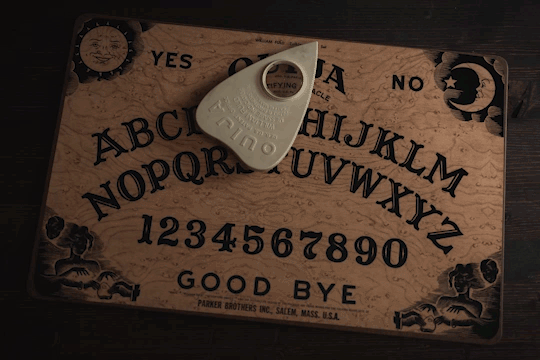
Wikipedia actually defines occultism really well: "a category of esoteric supernatural beliefs and practices which generally fall outside the scope of religion and science, encompassing phenomena involving otherworldly agency, such as magic, sorcery, and mysticism and their varied spells."
Basically, occultism is Religion After Dark. Virtually every major religion or spiritual movement has its own occult movement, which often takes the teachings of that religion or movement and applies them in unorthodox ways, like magic rituals.
The word "occult" comes from the Latin occultus, meaning "hidden" or "secret." This implies that occult practices are secret or underground in some way.
In Western cultures, when we talk about the occult we are usually talking about Western occult traditions, which have roots in European Christianity and, in some cases, pre-Christian religion. (And, unfortunately, a lot of appropriated Jewish and Muslim practices.) The word occult originally referred to practices like astrology, alchemy, divination, and magic.
The occult includes both folk magic practices like witchcraft and formal systems like ceremonial magic -- however, people and groups that identify as occult tend to place a focus on esoteric knowledge. In my experience, self-identified "occultists" tend to be more interested in high magic systems than in folk magic, or their interest in folk magic is academic rather than intuitive. There are also occultists who identify with modern occult fields like demonology, cryptozoology, parapsychology, etc.
One of the most influential works in Western occultism is the Corpus Hermeticum, texts on occult sciences attributed to Hermes Trismegistos (a syncretization of the Greek god Hermes and the Egyptian god Thoth). Occult systems based on the Corpus Hermeticum are called Hermetica.
Another major influence on Western occultism is the Kabbala, an ancient Jewish mystical tradition. To be clear: Kabbala is a closed practice. Not only that, but to truly understand Kabbala requires a grounding in Jewish philosophy and culture that really isn't possible for outsiders. Western occultism is not based on Kabbala -- it is based on a misinterpretation of Kabbala by Christian magicians in the Middle Ages and Renaissance. (And if you're not Jewish, Kabbala shouldn't be part of your occult practice.)
Secret societies play an important role in many Western occult traditions. One of the most famous of these is the Hermetic Order of the Golden Dawn, which was active in Great Britain in the late 19th and early 20th centuries. Notable members of the Golden Dawn include Aleister Crowley (whose writings are incredibly influential in modern occultism), Sir Arthur Conan Doyle (author of Sherlock Holmes), Dion Fortune (another well-known occult author), Pamela Coleman Smith and A. E. Waite (creators of the modern tarot deck), and Bram Stoker (author of Dracula), among others.
The Golden Dawn has had a huge influence on modern occultism. Gerald Gardner, founder of Wicca, was influenced by the Golden Dawn, and as a result Wicca combines GD-style occultism with paganism and witchcraft. Aleister Crowley founded his own religion/spiritual tradition called Thelema.
Some more recent occult movements include chaos magic, demonolaltry, and many forms of Satanism.
Some examples of occult practices are: alchemy, astrology, divination with tarot cards, using magic circles in spellcasting, calling the quarters, invocation and evocation of spirits, and creating sigils.
Sources:
"Religion Library: New Age" - Patheos
"New Thought" - Encyclopedia Britannica
"Spiritualism" - Encyclopedia Britannica
"Theosophy" - Encyclopedia Britannica
Witchcraft for Everyone by Sam Wise
The Spiral Dance by Starhawk
"Natural Magic" - Wikipedia
"What Does It Mean to be Pagan?" by Sam Wise
"Occult" - Wikipedia
"Occultism" - Encyclopedia Britannica
"Our Problematic Occult Ancestors" by Mat Auryn
#yes i'm citing myself as a source#i'm not copying and pasting my entire bibliography from my book here#long post#my writing#witch#witchblr#witchcraft#new age#new age spirituality#occult#occultism#pagan#paganism#baby witch bootcamp#baby witch#baby pagan#history#resource#witch resources#pagan resources#occult resources#new age resources
288 notes
·
View notes
Text
Park Jimin's ideal type based on his natal chart ♡︎
*English is a foreign language for me, so sorry for mistakes
Sexually, Jimin will like a typical femme fatale. The clichéd movie image of a woman in a black dress, stockings, red lipstick, with a sexy look is obviously very attractive to him. Fatal, magnetic, seductive, she exudes sexuality and even some kind of danger. She is shrouded in a veil of mystery and even mysticism.
She can do esoteric, tarot, psychology. The image of the vampire or witch might be very attractive. Such a woman knows her own worth, and will not long tolerate what she does not like.
Very passionate, deep, sexy, for her love is either everything or nothing. Jimin clearly needs a girl who is able to plunge into passion completely with her head, without thinking about the consequences.
Here the story is not about a calm, vanilla relationship - it needs drama, passion, a constant feeding of vivid emotions. Otherwise, it will get boring and the interest will start to fade.
As a wife, Jimin needs an easy-going girl. He will have to be intelligent to discuss and exchange ideas with, and he will be able to learn many interesting things.
She is ready at any time to break away from the place, go to an interesting place or go on a trip. She needs a constant change of picture A stay-at–home girl who needs to be persuaded to go somewhere is definitely not suitable here.
She may have a lot of friends, she is a "social butterfly", loves to learn, read books, consumes a lot of information.
«Airy», optimistic, incredibly charming and clearly his soul mate - this is the kind of wife Jimin will always be easy and interesting.

#bts jimin#bts#bts icons#jiminie#jimin#park jimin#jimin aesthetic#kpop astrology#kpop#korean idols#idol#astrology#astro#чимин#бтс#кпоп#астрология#bangtan
45 notes
·
View notes
Text
Mystics within various world religions share much in common. For them the superiority-factor is not the religion they belong to but the quest for the Interior Path to the Divine. A perennial philosophy of the ages, an unbroken chain of mystics throughout time, earlier epochs (yugas), uncovering lost teachings or secret mystical books, finding mystical wisdom in the scriptures of the world religions, mystics being critical of empty rituals at temples, initiations into esoteric mysteries and practices, a belief in a God beyond god/gods and goddesses, a higher heavenly realm beyond the regular heavens…these are all familiar. Versions of these have not only been themes in Radhasoami but also in many other earlier mystical movements from west to east. John Davidson has written about some of this, but there's much more that could be said about earlier mystical movements sharing many of the same basic ideas. What makes the Sants of India (including Radhasoami) different from, for instance, the dozens of mystic schools of Alexandria, is that some of the Sant tradition still survives, whereas the teachers of the Alexandrian schools like Valentinus and Basilides are dead and gone, reduced to a small number of surviving fragments of Greek texts and what's quoted from them in the writings of others. They have no surviving sects still with us in the world today.
-- James Bean
8 notes
·
View notes
Text

An Update, a Draft and "Classes" (Devlog n.4)
Hey hello, been a bit of time since my last post, so I think an update might be nice.
Simply put, I got a job now, so certainly less time overall to dedicate to this project. It's still rotating in my mind and I'm slowly fleshing out this setting (so that I may properly choose fitting options for player character creation and progress), but yeah I haven't put much to paper yet.
As an example, i've made a very first draft of a map of this world, clearly not much yet but ye, it's the general idea, including the various most notorious cultures that inhabit the first part I'll focus on, the Inner Sea of Entemar
As for the "Classes" (might name them something more stylish and less DnDish down the road) I've thought a bit and narrowed down a starting set of them:
- The Questing Knight, mainly coming from the Equesi Principalities (tho their tradition comes from a queendom from the desertic west) is an oath-bound travellers with a martial training that seek resources or alliances that will benefit their homeland in one shape or form.
- The Evoker, erudite magician from the School of Evokation (built far from Entemar on a mystical Island) they draw their powers from pacts with Lords in the Beyond, usually the Elemental Lords.
- The Tomb Seeker, a pilgrim monk that honours the concept of Death and offers respect and remembrance to those that could not obtain it otherwise, their Order is ancient and was founded after a cataclysmic war, digging tombs for all the victims of battles. They often orbit around the Deadlands now, where many corpses still lay in the wilds, forgotten from all.
- The Wild Witch, esoteric practitioner of the most ancient form of magic, Alchemy (tho they also dabble in other disciplines), they are mostly found in the Lordless lands, where they've often become pillars of their community far from the reach of those that would seek to make them tools for power and intrigue.
- the Reaver, coming from the many piratical communities spread on the coasts of the inner sea they are roguish thrillseekers that are prized as naval combatants, but many also seek renown and riches on land, following the path of other legends before them.
- the Chanter, itinerant troubadours and bards who have mastered the power of Illusions, able to change the world around them with but a few words. They generally use their powers secretively, for rivalries between chanters run deep and conflict will doubtlessly arise from notoriety.
That's it for now, I might add one or two other option but I think it's a well-rounded set of character archetype. I also have other cool ideas but they will have to wait for when I focus on other parts of the world (such as a gunpowder mage)
8 notes
·
View notes
Note
To your knowledge, was there ever any tension between practioners of what one might call "practical alchemy" (i.e., those who were actually trying to transmute metals and etc.) and the more esoteric type of alchemists, who were trying to purify the soul and the like? Or was the whole philosophical framework part in parcel with alchemical practice?
Oh good fuckin question
Those two types of people basically didn't exist at the same time. For most of history, the vast majority alchemists were what you'd call "Practical Alchemists". At least in the Renaissance, alchemists were a common sight in the courts of Europe. When your economy is based on precious metals, it pays well to have a wizard on staff who can use chemical methods to test the purity of potential counterfeits.
Alchemists needed a way to advertise their skills to each other without giving up their own secrets. They would often publish pamphlets or advertisements using occluded metaphors that other alchemists would understand, but that the average passerby couldn't make heads or tails of. That's where you get images like the Green Lion Devouring the Sun.
But there really wasn't an underlying philosophical or theological framework to alchemy as a whole. Alchemists were about a 20/80 mix of entrepreneurs and charlatans, which led to good alchemists getting good at signing detailed contracts.
There's a lull for a bit when the enlightenment when science takes center stage. Then you hit modernity, and the occult world becomes dominated by the Secret Society. This is the heyday of the Rosicrucians and the Golden Dawn, groups that are looking back on the occult history of Europe to compile the knowledge.
This is where we get this idea of the Alchemist as Mystic. These groups applied significantly more mysticism to Alchemical manuscripts than was usually present, largely because many alchemical concepts originally came out of Hermeticism and Neoplatonism anyway, so it was pretty easy to spiritualize the fuck out of alchemy as a whole.
There were also definitely exceptions! As with anything related to the occult, the boundaries are extremely fuzzy. But many alchemists were also wizards. John Dee, Basil Valentine, Paracelsus, etc but that doesn't necessarily mean the alchemy was PART of the mysticism.
But you know where like 90% of the modern alchemy as mysticism stuff comes from? Jung. Dude was obsessed with alchemy.
336 notes
·
View notes
Text
Tarot for me seems inescapable; I have at periods of my life not liked the cards I was dealt, or felt that the Tarot was leading me down a path that I wasn't comfortable with, but looking back it was always my own actions at the time and the cards were simply telling me that bad things await if I continue doing what I'm doing, because the actions were wrong-headed.
I will say that at first (maybe 16 years ago) I looked at the cards and tried to puzzle out all of the esoteric meaning I could. I remember sitting in my room with the cards in various layouts, including one with the entire deck as a gigantic Tree of Life covering my floor. I looked at it and tried to think what the people who formulated the magickal system had been going for, and I had many intuitions regarding it. Mystical symbolism is practically an infinite world in and of itself.
I had some missteps with the occult and made some errors, to say the least, but after a time I always felt myself drawn back toward the cards, like it was time to go back on some path I had abandoned. I would go through periods of time where I would convince myself that "superstition" was silly, but my experience with it taught me otherwise, indeed that the metaphysical world is at once based on the simplest ideas, but the nature of it is infinitely complex.
I created darkpinktarot.com because I felt a much stronger draw toward the cards, that I should do something really meaningful with them, so I used my web programming skills to make a website where people could do readings with various spreads and public domain decks like the Rider-Waite-Smith deck, the Tarot of Marseilles, and others.
Some of it wasn't easy, but as I progressed I created a tool that not only I could use but others could use to gain spiritual insight as well, and if you have that gift of divining, insight into practically anything. While I'm still adding to it, it's reached a point where I'm starting to feel really happy with what I've created.
13 notes
·
View notes
Text
Helena (Madam) Blavatsky - Russian Mystic
Female figures in witchcraft, paganism, spiritualism, and occultism are often erased in history. This is my second post detailing a woman who had an undoubtable impact on the world so many of us dip our toes into.

Life’s History
(August 12, 1831 - May 8, 1891)
Born into an aristocratic family, Blavatsky traveled around the Russian Empire as a child. Largely self-educated, she grew an interest in Western esotericism during her time as a teenager. She later claimed, after traveling the Americas and India, that she encountered a group of spiritual adepts (”the Master of the Ancient Wisdom) who sent her to Tibet. She claimed it was here that she was trained to develop a deeper understanding of the synthesis of science, religion, and philosophy. While later biographers and critics have argued that at least some, if not all, of these visits were fictitious, claims are unable to necessarily be proven either way.
Her life ended in 1891, when she died of influenza. Blavatsky was an intensely controversial figure during her time, held in reverence by supporters as an enlightened Sage and disregarded by critics as a conman.
Spiritual and Occultism Influence
By the early 1870s, Blavatsky was involved in the Spiritualist movement (a social religious movement where the idea of a consciousness persists after death and can be contacted by the living). While she genuinely defended the exist of Spiritualist phenomena, Blavatsky argued against the mainstream Spiritualist idea that the entities contacted were the spirits of the dead.
In 1877, Blavatsky published Isis Unveiled, a book that outlined her Theosophical worldly perspective. Describing Theosophy as “the synthesis of science, religion and philosophy”, she proclaimed that it was reviving an “Ancient Wisdom” that underlay all the world’s religions. The Society became allied to the Arya Samaj (a Hindu reform movement) in 1880, in the same year also becoming the first recorded instance of someone from the United States to formally convert to Buddhism.
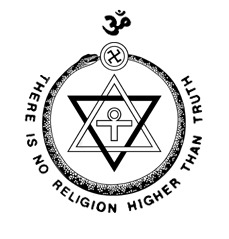
Theosophy spread rapidly in India, however it began to experience internal issues after Blavatsky herself was accused of creating fraudulent paranormal phenomena.
Experiencing ailing health, Blavatsky returned to Europe (London, England). It was there she published The Secret Doctrine, which was a commentary on what she claimed were ancient Tibetan manuscripts.
Her Theosophical doctrines heavily influenced the spread of Buddhist and Hindu ideas in the West, and additionally aided in the development of Western esoteric shifts such as the New Age Movement and Anthroposophy.
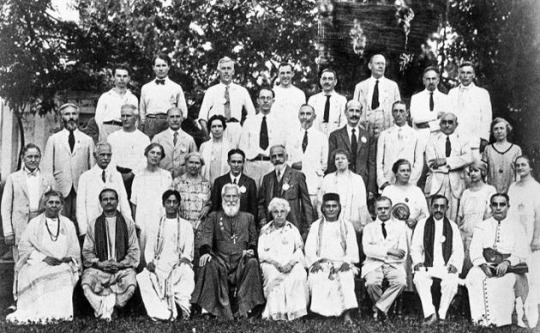
6 notes
·
View notes
Text
The thing that's bullshit about knowledge cults is that you never have to hide your secrets behind esoteric symbolism and riddles or garden paths; if you want to keep dangerous or powerful knowledge safe, and preserved for only the chosen few, just write it down in a book and make a lot of copies.
If you're worried about what length of book you need, 20000 words per treatise seems to be around the length where most people won't bother to read it once it's part of the required curriculum or literary canon. When it initially it catches on, a few people who are your direct students or their followers will use your ideas to change the world and your reputation as a mystic philosopher will be secured, even if you weren't going for that. But by that point about half the people who will ever read your book have already done so, and you can rest easy that although your ideas will survive, not too many people will ever see them, let alone understand what they imply.
You want to help out the ones who actually read the book find each other, though, so make sure to put a few clever witticisms and commonplaces in the beginning chapter as a filter so they can weed out the pseuds. Most people who talk like they've read your book will only ever quote those, because the secondary literature that they read was written by someone who only read that first chapter, so they can easily be filtered off, and those who know what lies beyond the second chapter heading can simply reference a later part of the book. What's more, by doing this, you'll also be following a long-storied tradition that dates back at least as far as we have books.
#why are you reading the tags on this post?#fine. go watch the life aquatic with steve zissou#one of my favorite movies and about what this post is about
12 notes
·
View notes